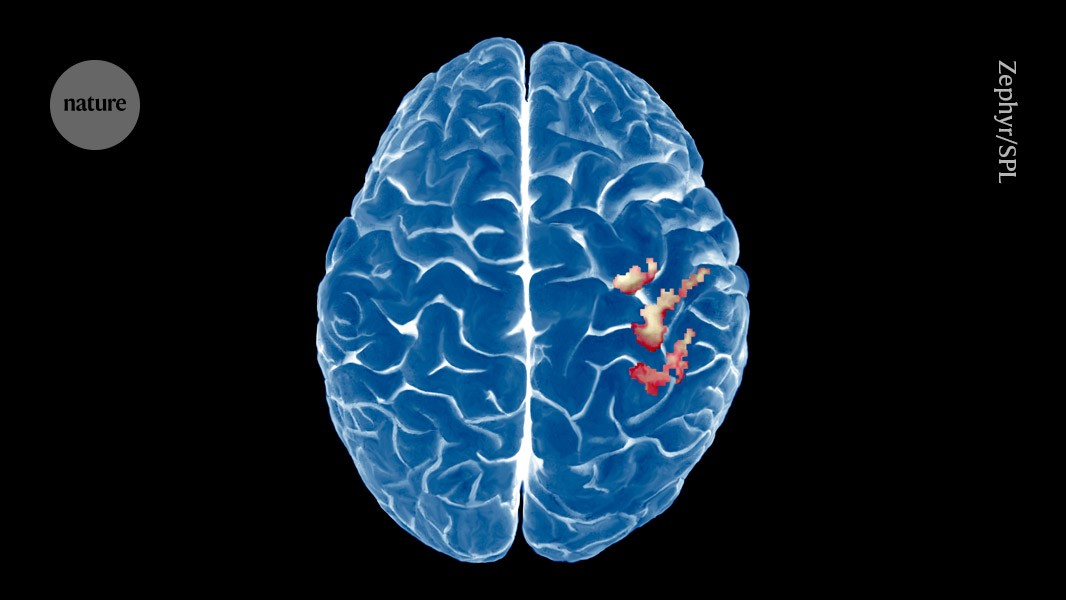The brain’s map of the body is surprisingly stable — even after a limb is lost

Study challenges the textbook idea that the brain region that processes body sensations reorganizes itself after limb amputation

The brain’s map of the body in the primary somatosensory cortex remains unchanged after amputation.Credit: Zephyr/Science Photo Library
A brain-imaging study of people with amputated arms has upended a long-standing belief: that the brain’s map of the body reorganizes itself to compensate for missing body parts.
Previous research1 had suggested that neurons in the brain region holding this internal map, called the primary somatosensory cortex, would grow into the neighbouring area of the cortex that previously sensed the limb.
But the latest findings, published in Nature Neuroscience on 21 August2, reveal that the primary somatosensory cortex stays remarkably constant even years after arm amputation. The study refutes foundational knowledge in the field of neuroscience that losing a limb results in a drastic reorganization of this region, the authors say.
“Pretty much every neuroscientist has learnt through their textbook that the brain has the capacity for reorganization, and this is demonstrated through studies on amputees,” says study senior author Tamar Makin, a cognitive neuroscientist at the University of Cambridge, UK. But “textbooks can be wrong”, she adds. “We shouldn’t take anything for granted, especially when it comes to brain research.”
The discovery could lead to the development of better prosthetic devices, or improved treatments for pain in ‘phantom limbs’ — when people continue to sense the amputated limb. It could also help scientists working to restore sensation in people who have had amputations.
Mapping cortical plasticity
Study first author Hunter Schone, a neuroscientist at the University of Pittsburgh in Pennsylvania, says that previous reports from some people with amputations had led him and his colleagues to doubt the idea that the brain’s map of the body is reorganized after amputation. These maps are responsible for processing sensory information, such as touch or temperature, at specific body regions. “They would say: ‘I can still feel the limb, I can still move individual fingers of a hand I haven’t had for decades,’” Schone says.
To investigate this contradiction, the researchers followed three people who were due to undergo amputation of one of their arms. The team used functional magnetic resonance imaging (fMRI) to map the cortical representations of the body before the surgery, and then after the amputation for up to five years. It is the first study to do this.
Before their amputations, participants performed various movements, such as tapping their fingers, pursing their lips and flexing their toes while inside an fMRI scanner that measured the activity in different parts of the brain. This allowed the researchers to create a cortical 'map' showing which regions sensed the hand. To test the idea that neighbouring neurons redistribute in the cortex after amputation, they also made maps of the adjacent cortical area — in this case, the part that processes sensations from the lips. The participants repeated this exercise several times after their amputation, tapping “with their phantom fingers”, says Schone.
The analysis revealed that the brain’s representation of the body was consistent after the arm was amputated. Even five years after surgery, the cortical map of the missing hand was still activated in the same way as before amputation. There was also no evidence that the cortical representation of the lips had shifted into the hand region following amputation — which is what previous studies suggested would happen.
Makin says their study is “the most decisive direct evidence” that the brain’s in-built body map remains stable after the loss of a limb. “It just goes against the foundational knowledge of the field,” she says.
Enjoying our latest content?
Login or create an account to continue
- Access the most recent journalism from Nature's award-winning team
- Explore the latest features & opinion covering groundbreaking research
or
Sign in or create an accountdoi: https://doi.org/10.1038/d41586-025-02686-5
This story originally appeared on: Nature - Author:Katie Kavanagh
















